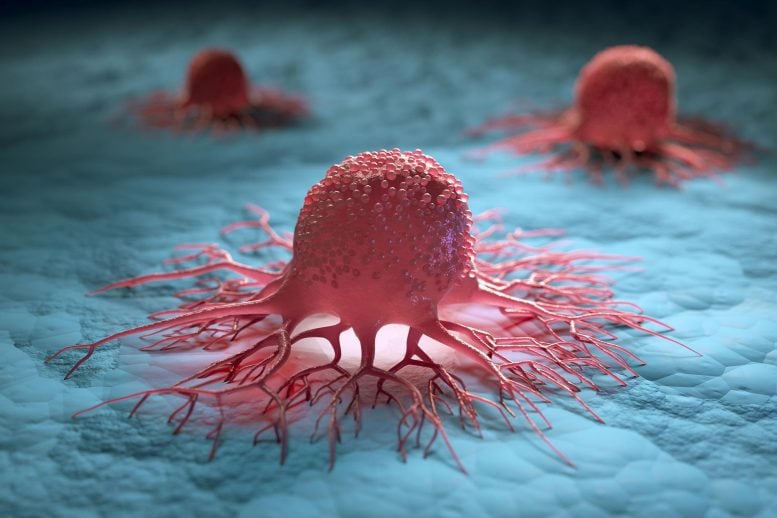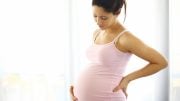
Endometrial cancer, also known as uterine cancer, is a type of cancer that affects the lining of the uterus (the endometrium). It is most commonly found in postmenopausal women and can cause symptoms such as abnormal vaginal bleeding, pelvic pain, and pain during sex.
According to research from the University of Queensland, having more children can decrease a woman’s risk of developing endometrial cancer.
According to research from the University of Queensland, having more children may decrease a woman’s risk of developing endometrial cancer. Dr. Gunn-Helen Moen and Shannon D’Urso from the Institute for Molecular Bioscience at UQ used genetic analysis to investigate risk factors for endometrial cancer and found that having three children compared to none could reduce a woman’s risk by 50%.
“We found that the more time a woman spent pregnant or on the contraceptive pill – when the body is exposed to less estrogen – was associated with a lower risk of endometrial cancer,” Dr. Moen said. “While previous studies have shown multiple pregnancies and using the oral contraceptive pill can reduce the risk of endometrial cancer, this is the first study that used genetics to study multiple risk factors at once.”
Endometrial cancer is a type of cancer that affects the lining of the uterus and is the fifth most common cancer among Australian women, with a prevalence of about 1 in 52. In their study, the researchers at the University of Queensland used genetic analysis to examine how many years women ovulated, which was calculated by subtracting the time spent pregnant or using the contraceptive pill from the years spent menstruating.
“It is thought that high levels of estrogen, unopposed by progesterone, is a risk factor for developing endometrial cancer. Pregnancy and the contraceptive pill both provide progesterone to oppose estrogen, and this could be why we see a protective effect against this cancer. To put it simply, the shorter the exposure to estrogen over your lifetime, the smaller your risk of developing endometrial cancer.”
Researchers found evidence that suggested reducing the years of ovulating could reduce the risk of endometrial cancer, but the strongest links pointed to childbirth. Dr. Moen said there could be several explanations for why pregnancy reduces the risk of endometrial cancer.
“It could be the increase in protective progesterone in the latter stages of pregnancy, or it could be because the body potentially removes pre-cancerous endometrial cells from the uterus during birth,” Dr. Moen said.
During the study, the researchers separated some known risk factors for endometrial cancer, such as increased body mass index (BMI) and age at first menstruation and menopause and looked specifically at the effect of the number of live births and years ovulating.
“In obesity, high levels of estrogen are produced in fat tissue, which makes it a risk factor for endometrial cancer,” Dr. Moen said.
Endometrial cancer cases are increasing worldwide, and Dr. Moen said this may be due to rising BMI levels, which account for about 40 percent of endometrial cancer cases in developed countries. “But we wanted to find out more about the impacts of live births directly, irrespective of other known risk factors. We used data to study hundreds of genetic variants, six of which were associated with the number of live births.”
“This study is the first time we’ve been able to establish a cause-and-effect relationship between the number of births and a reduced risk of developing endometrial cancer,” Dr. Moen said.
However, the researchers could not be sure if the same was true for years of ovulating and oral contraceptive pill use.
“Analysing larger datasets could help us understand more clearly whether it is the hormonal or mechanical effects of pregnancy that give a more protective effect, as well as dig further into the effect of oral contraceptive pill use.”
Reference: “Mendelian randomization analysis of factors related to ovulation and reproductive function and endometrial cancer risk” by Shannon D’Urso, Pooja Arumugam, Therese Weider, Liang-Dar Hwang, Tom A. Bond, John P. Kemp, Nicole M. Warrington, David M. Evans, Tracy A. O’Mara and Gunn-Helen Moen, 1 November 2022, BMC Medicine.
DOI: 10.1186/s12916-022-02585-w
The study was funded by the National Health and Medical Research Council, the Australian Research Council, the Research Council of Norway, Nils Norman, the British Heart Foundation, and the UK Medical Research Council.









my guess is that we will see a tsunami of papers like this in the coming years fueled by the idea that it may get women to have more children now that the birthrate is dropping.